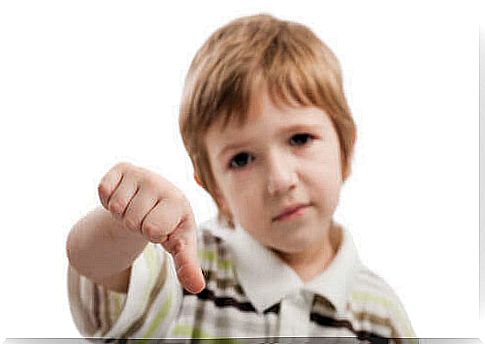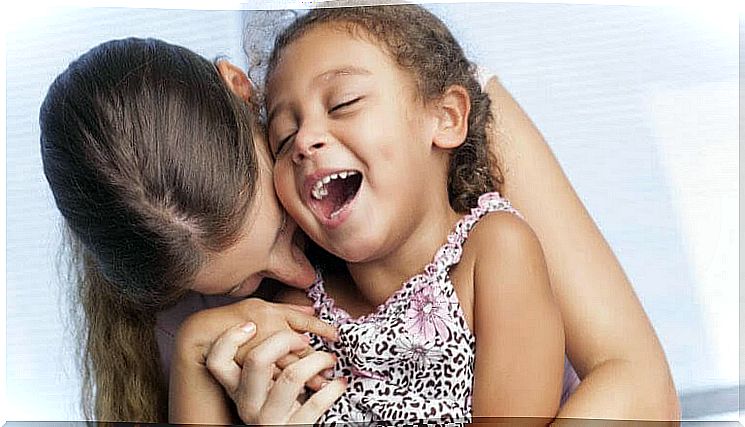Emotional Communication In Childhood

Being able to confidently communicate your own feelings is as important as recognizing and responding to the feelings of others. This promotes one’s personal well – being and helps to create good relationships with one’s surroundings, and is called emotional communication.
Communication is the act of transmitting a message to a recipient via a specific channel (written or oral, for example). It is specific to a particular context and has a specific purpose.
There are two types of communication:
- Oral communication. This has a clear, distinct message, which tries to convey certain information to the recipient by oral means or the written word.
- Communication through gestures. This can complement the foregoing, but includes movements, signs, facial expressions and body language.
We can also add a third category: emotional communication. This type of communication seeks to convey the communicator’s emotions and emotional states. It can be a comment, a smile, tears or an expression of anger.
To give you an example, a “thank you so much” that is said to anyone is something completely different from the same phrase to their mother accompanied by a loving hug. By using emotions, the message becomes stronger and more memorable for the other person.
The benefits of emotional communication in childhood
Children have a lot to work with when it comes to their emotions. Under the guidance of their parents and teachers, they can learn to recognize, manage and express their feelings in a positive and constructive way.
This helps them get to know themselves better. In addition, they may face conflicts or frustrating situations in a more positive way. When children learn to control their emotions properly, it also helps them to develop a more stable, flexible and optimistic mentality.
So how can we help our children learn to deal with their emotions?
Here are the most important channels you can use:
- Dialogue. Children need to know that their parents are available when they want to be heard. In this way, they can deal with their emotions and find a solution if they feel that the negative emotions are taking over. This is about expressing your feelings.
- Actions. There is nothing more effective than a hug or a kiss if we want to show affection to someone. In the same way, a confident attitude or body language can communicate the idea of disapproval or approval to something or someone.

Other means of emotional communication in childhood
In addition to what we have already talked about, emotional communication also involves listening to other people and understanding what they are trying to say.
In this way we can interpret other people’s feelings and act in response to them. But not least, we can develop empathy, a fundamental and important quality.
Physical contact is also another important area. We can only achieve this with those closest to us.
Physical contact, if applied properly, is much more effective than any verbal message or gesture. A caress, a hug or a kiss shows a high degree of emotional closeness between two people.
Finally, we would like to add that there is a subjective perspective on all this. The use of certain expressions gives our statements an emotional content, and because of this our words may not be interpreted as an absolute and irrevocable truth. Our feelings are taken into account along with the words.
When we use expressions such as “I think” , “I think” and “I feel” , the person on the receiving side becomes more empathetic with us and the communication becomes positive. It is very useful in relationships with friends or brothers and sisters, for example, and other relationships where there are often many conflicts.
How can we practice emotional communication in childhood?
There are many practical ways to work with this with children so that they can learn to communicate what they experience, feel and desire. Here are some of them:
- Different activities. There are many exercises and activities that can strengthen their emotional intelligence and emotional communication. A simple look online can help you find very valuable and useful information.
- Books. There are many books written by experts in the field, such as Daniel Goleman, which are aimed at both children and parents. In his books, you will find methods and strategies aimed at improving emotional communication in children’s lives. Again, you can find many books online that can be very useful for you. There is also a lot of good quality audiovisual material online.
- Be a good role model. There is nothing better than our own example to influence our little ones. If you show your child that you are comfortable expressing what you feel and think, your child will probably do the same. By being a good role model, we can encourage the subjective perspective we mentioned above, through communication that is both verbal and expressed with our body language. If these feelings are positive, it will have a big impact on our children. The use of emotional verbs that hope, love, hate, fear or worry, among others, can be very helpful.
Give your children the right tools
We hope you enjoy seeing how important emotional communication is in childhood. It is really worth all the time and effort you can put into it. You then give your children one of the most important tools they can have in their lives.
As a thank you for your efforts, you will be able to see the difference it will have in their lives: the positive attitude they will have towards you and the improved communication between you.









